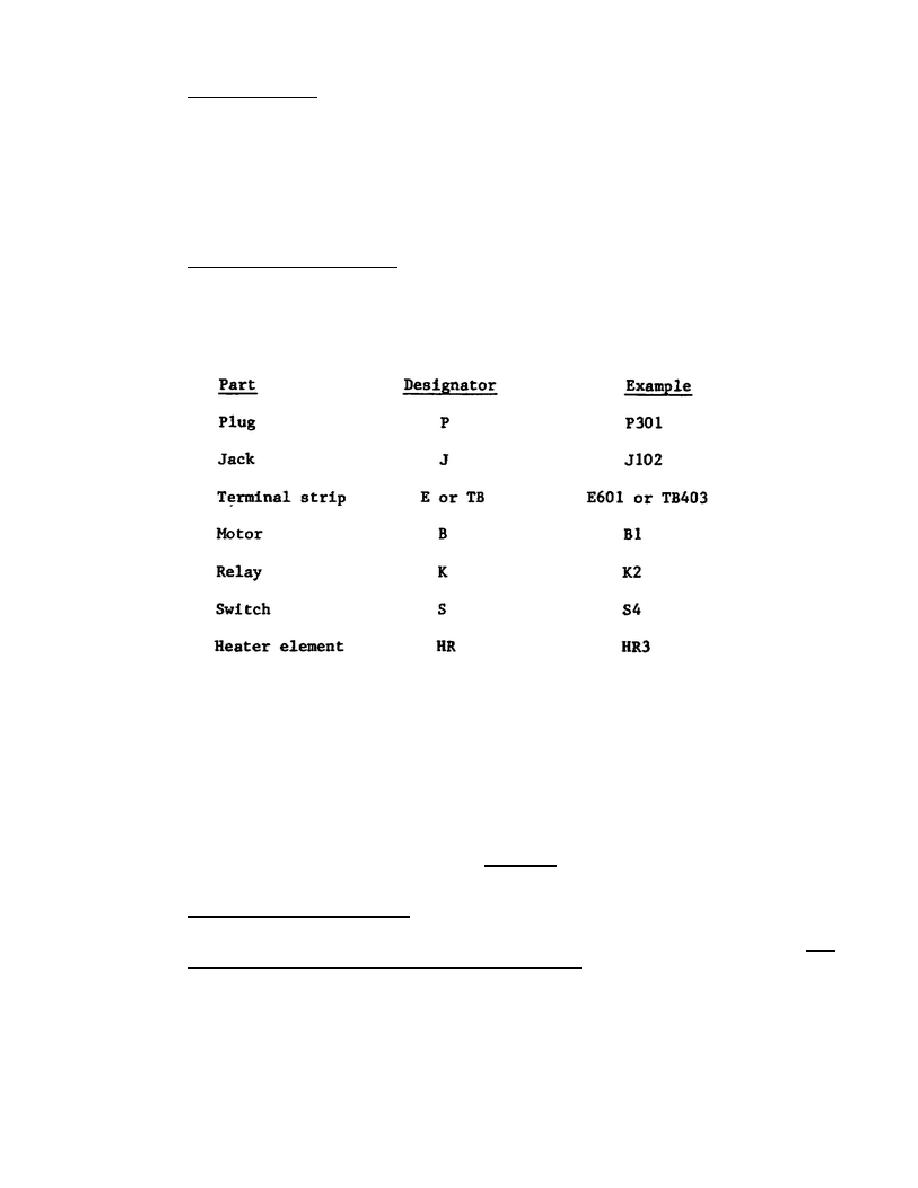
(1) Wiring methods.
In equipments with many stages, terminal boards with
numbered terminals are used as common connecting points between stages.
If there are sufficient terminals on the terminal board, several stages
can be connected to the same board without interference between stages.
This method of wiring provides easily accessible test points and less
confusion in the wiring. Since the output signal from one circuit may
be used as the input signal to several other circuits, a terminal board
is a convenient place to make these connections, rather than at the
pins of a transistor or tube.
(2) Identification of wires. Before a technician can use a wiring diagram,
he must know how to read one. A wiring diagram such as the one shown
in figure 4-1 uses either a color code or a numbering system, or a
combination of both to identify the wires. You will find that in most
wiring diagrams the system of parts identification is standardized, as
shown in the following chart.
The terminals may be either numbered or lettered. To illustrate how a
wiring diagram is read, we will start with the plug labeled P4101 (fig.
4-1). From terminal E, a wire labeled P4204-Q leads to terminal Q on
P4204.
Notice that at terminal Q the same wire is labeled P4101-E.
This enables you to quickly identify the connections from either
terminal.
Notice also that on P4204, terminal Q is connected to
terminal T.
The wire at terminal T is labeled P4001-17.
This wire
leads to terminal 17 of P4001.
Therefore, terminal E of P4101,
terminals Q and T of P4204, and terminal 17 of P4001 are all connected
together.
Since each plug on this chassis connects to a jack on
another chassis, it permits a physical ground on either chassis to
serve as electrical ground for both chassis.
(3) Use of wiring diagrams.
Wiring diagrams are useful when making
continuity checks. A continuity check is a test to determine if a wire
in an electronic circuit is open (broken). To perform this test, all
power must be removed from the equipment to prevent damage to the
ohmmeter. To illustrate a continuity check,
309 L4
57



 Previous Page
Previous Page
